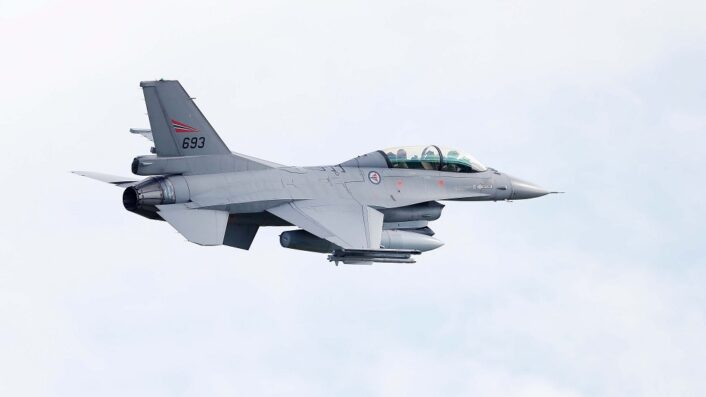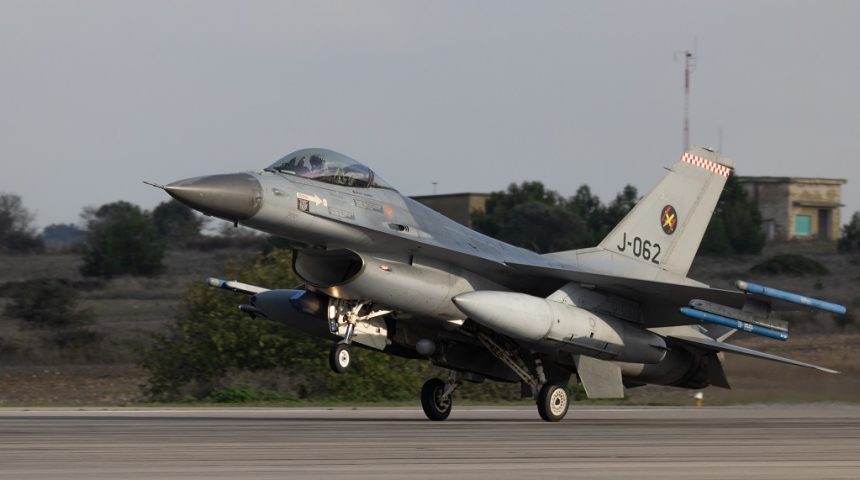The 24 Vipers will join the company’s fleet of fighter jets used for the Combat Air Force/Contracted Air Support (CAF/CAS) program in the US.
Draken International announced last week two contracts to acquire a fleet of second-hand F-16 Fighting Falcons from the Netherlands and Norway. The company is set to receive 12 aircraft from each country as they get retired from 2022. The exact timeline is not yet known as the transfer has to be first approved by U.S., Dutch and Norwegian authorities and some classified systems need to be removed before the aircraft can be delivered to Draken.
The sale of the Royal Netherlands Air Force F-16s was already expected. As we reported earlier this year, the Dutch Parliament was informed on Jun. 29, 2021, that an interdepartmental Defense Materiel Sales Committee, consisting of representatives of the Dutch Ministry of Foreign Affairs, the Ministry of Finance and the Ministry of Defence, approved the sale of 12 F-16s to Draken International. The Falcons will come out of the F-16 End Life of Type (ELOT) program after the Dutch retire their F-16s starting in 2022.
The F-16 is currently operated in the RNLAF by only one unit, the 312 Squadron at Volkel Air Base. The squadron is the last unit to operate the Viper as the other squadrons are gradually moving to the F-35 Lightning II. The remaining F-16s will be retired in batches from 2022 to 2024/2025, when the F-35 is expected to reach the Full Operational Capability and take over the roles of the F-16. Draken has also been offered the option to acquire an additional 28 F-16s from these batches.
Regarding for the Norwegian contract, the Forsvarsmateriell (Norwegian Defense Material Agency) has been working since 2019 to decide what to do with the Royal Norwegian Air Force F-16s as they get retired this month and fully replaced by the F-35. As for the Netherlands, only one RNoAF unit is still operating the Viper, the 331 skv at Bodø Air Base. Other than Draken, the government is looking to sell as many of the remaining F-16s as possible to allied countries.

At this time of writing, it is unknown if the two deals with Draken International only include single-seat F-16As or, more probably, also dual-seaters F-16Bs. It will also be interesting to see which systems will be removed from these F-16s before the transfer, how they will be modified after the delivery and eventually the adversary paint scheme they will be given. The aircraft are expected to be refurbished before the delivery and accompanied by their support equipment.
In their current configuration, the F-16s sold to Draken were initially delivered in the Block 1 configuration and later upgraded up to the Block 20 Mid Life Update configuration, with capabilities considered comparable to the F-16C Block 50/52 configuration. Both countries also installed some customized systems on top of the MLU upgrade, which might be the ones that will be removed before the transfer to the US company.
Following these contracts, Draken International will become the second company to provide contracted F-16 for the training of the U.S. Armed Forces, after the Canadian company Top Aces started receiving the F-16s acquired from the Israeli Air Force this year. The Vipers will join the fleets of Mirage F-1s, L-159s Honey Badger and A-4s Skyhawk already operated by the company to support the Combat Air Force/Contracted Air Support program. The F-16s are considered a step further toward an improved contracted threat replication, as they are 4th gen aircraft and thus more modern and capable compared to the ones currently used in this role.
As we already extensively explained in past articles here at The Aviationist, the original Combat Air Force/Contracted Air Support (CAF/CAS) multi-award contract, was announced to cover 40,000 flight hours of adversary training at 12 different air bases and 10,000 flight hours is support of Joint Terminal Attack Controllers (JTAC) training at nine Army bases. After some reductions, the current program’s first phase features a little less than 9,000 flight sorties at six bases for the first year and an optional three year-extension for a total of over 26,000 flight sorties.
The role of aggressors/adversary units is to train fighter pilots in the most realistic way in extremely important. While some services have their own units that replicate paint schemes, markings, insignias and, above all, the tactics, used in combat by their near peer adversaries, these are usually costly to operate and maintain: experienced aircrews, constant training and the proper assets are not cheap. For this reason, both in the U.S. and abroad, even those air forces who have the assets, budget and experience to insource adversary support services increasingly rely on contracted aggressor services provided by private companies.









